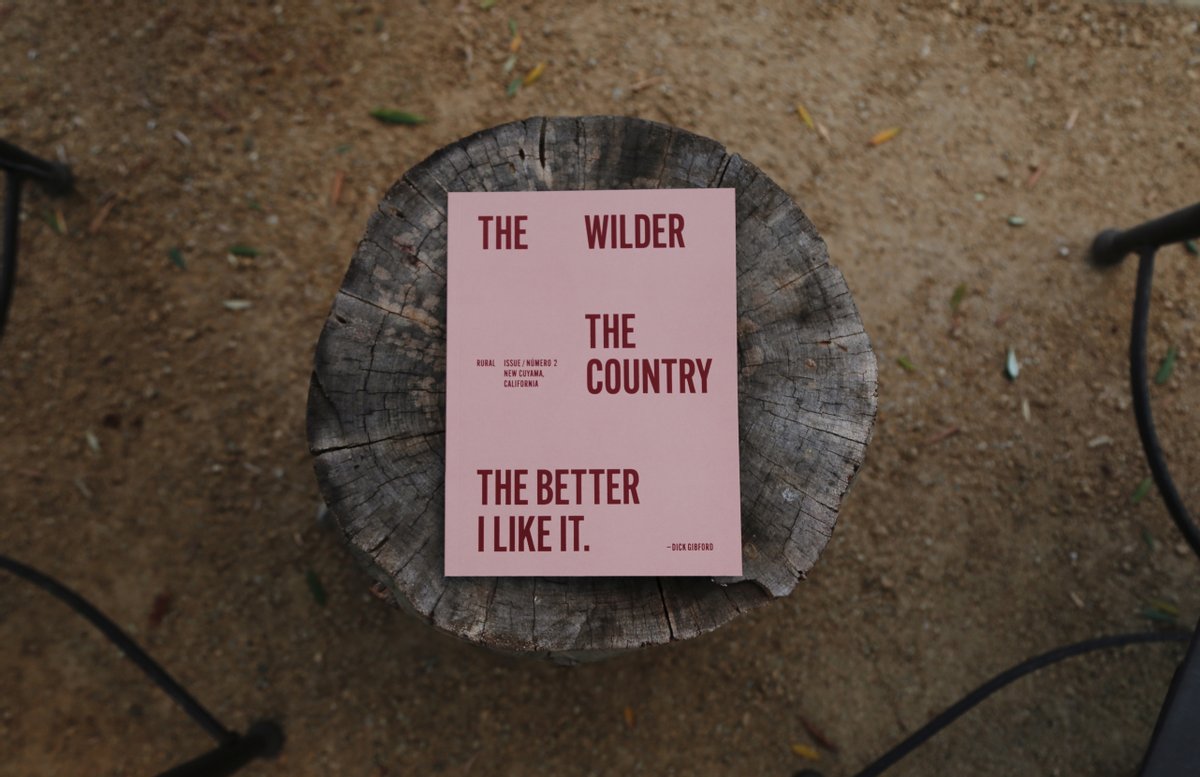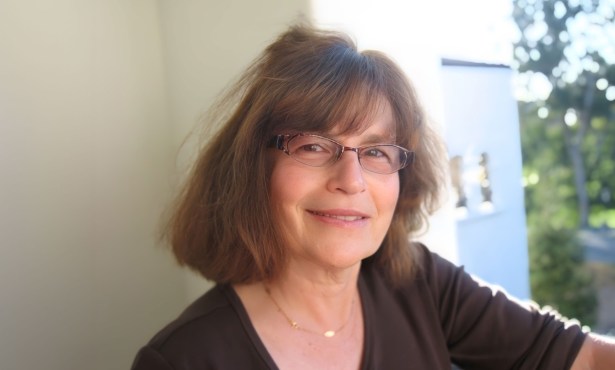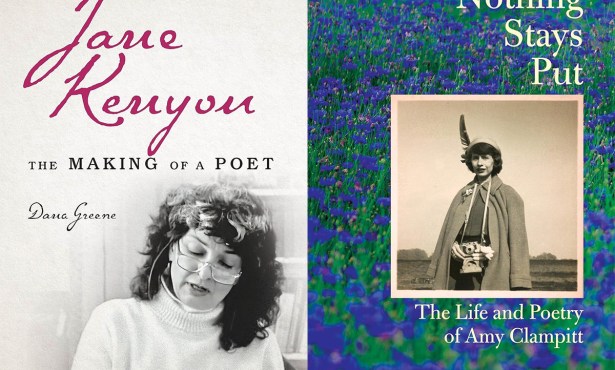Kim Sutherland’s ‘Rural, Issue 2: New Cuyama’
Artist and Author Produces Intimate Look at Northeastern Santa Barbara County


Ambitious things are happening right now in the Cuyama Valley of northeastern Santa Barbara County, from the Blue Sky Center’s blend of rustic hospitality and rural resiliency to the recently reimagined Cuyama Buckhorn, an inn, restaurant, market, and community hub that’s bringing both hipsters and hope to the region. These forces conspired to publish Rural, Issue 2: New Cuyama, the second edition of designer-photographer-author Kim Sutherland’s quest to uplift the understanding of remote farming communities around the United States. (Her first book focused on Joseph in eastern Oregon.)
To produce each book, Sutherland places herself as an artist-in-residence at a lodging place in town and then spends time getting to know the people, place, and issues of the day. The books are then given to the host hotel (the Buckhorn, in this case), the nearby library, and the people featured in the book, who also become free subscribers for future editions. A critical move was translating the book into Spanish by Blanca S. Villalobos, opening doors to further enjoyment and education across cultures.
Sutherland answered a few of my questions below.
Get the top stories in your inbox by signing up for our daily newsletter, Indy Today.
How did you become interested in the Cuyama Valley?
I initially came to know about the Cuyama Valley through Blue Sky Center’s artist residency program. They put me in touch with Cuyama Buckhorn because they thought my book project would be a great fit for us both, and it was!
Once I learned more about the town and its history, I was really interested in how it’s transitioned from an oil town to its current form and in how farmers are addressing the water crisis. Many people are doing inspiring things there to try and address it.
Tell me about the Rural Issue project.
The election in 2016 was what sparked my idea for this project. I was noticing this growing narrative in the media (and in my community) about urban versus rural communities that framed them as opposing forces with very different values. I recognized that this narrative left no space for nuance.
People are layered, so thinking that you can define individuals or communities based on where they live or even their politics is misguided in my opinion, and it definitely doesn’t leave any positive paths forward. I realized that what was actually needed was more listening, so I decided to go and talk to people myself.
Really, I was, and still am, trying to find a way to understand our collective consciousness. I am interested in genuine conversation with strangers, often people that maybe have different views than I do and on how where they live has helped to shape their views. How has place impacted the way people engage or think about community, how they think about the environment, their politics, creativity etc.? And then reflecting on how my values and ideas have been shaped due to my reality as well.
The intention for this project is to potentially create a line for understanding each other better, it starts with listening and that transcends the urban / rural divide.
What were some of the more fascinating experiences or characters you encountered?
I meet so many great characters through this project; it’s the best part. All of my conversations with people have moments of inspiration and surprise.
But one that stands out would be my conversation with Dick Gibford. He’s a cowboy to the core, conservative, lives up in the mountains most of the year by himself, working with horses and cattle, super independent. I had this expectation of what I thought he would be like, and he really surprised me with his stories around spirituality and his emotional connection with Gurdjieff (philosopher/spiritual leader), his poetry. That is something that keeps happening to me and is a great reminder for myself to not judge a book by its cover.
Also, getting to meet and know Carmen Sandoval and her openness to sharing stories about her indigenous Chumash heritage and healing practices. I think we were both in tears about 30 minutes after we met so being able to go deep like that with someone you barely know is incredibly powerful.
The fascinating experiences are really just getting to be immersed into people’s lives for a moment in time. Just being in their houses, driving around in their cars, walking around their property — they’re mundane things, but they’re the things that make up our everyday lives, and I’m so grateful for those experiences.
It was also really cool and inspiring to see how some of the farmers working toward more sustainable agricultural models (Robbie and Steve from Condors Hope, Alisha from Jujubee, and the Quail Springs folks) are addressing issues around water in the county. The island of thick green trees, plants, and vegetables that you encounter when you enter Quail Springs surrounded by a desert almost brought tears to my eyes.
It sounds like I cry a lot, but I don’t!
Why should more people know and care about this region?
Well, not only is it a beautiful place, but you can really feel like you’re getting away out here. There’s so much space around you; it’s humbling. Like I said in my book, it feels a bit like a time warp back to a time when things were more simple and strangers said hello to each other.
Also, the water issues and the ways that some of the farmers are addressing it are really interesting and inspiring. Oh, and there’s a really lovely/fun hotel to stay at….
Are there more projects in the works?
I’m on the lookout for my next location to do Rural, Issue 3. I like to go to diverse geographic locations where different types of industry exist. I’m interested in a rural community that sits near the ocean or a body of water next. Maybe Alaska? I’m pretty open though. Just need a hotel that’s willing to host me, and I’ll be there!
Purchase Rural, Issue 2: New Cuyama here, and see kimberly-sutherland.com for more information on the author.
Every day, the staff of the Santa Barbara Independent works hard to sort out truth from rumor and keep you informed of what’s happening across the entire Santa Barbara community. Now there’s a way to directly enable these efforts. Support the Independent by making a direct contribution or with a subscription to Indy+.




You must be logged in to post a comment.